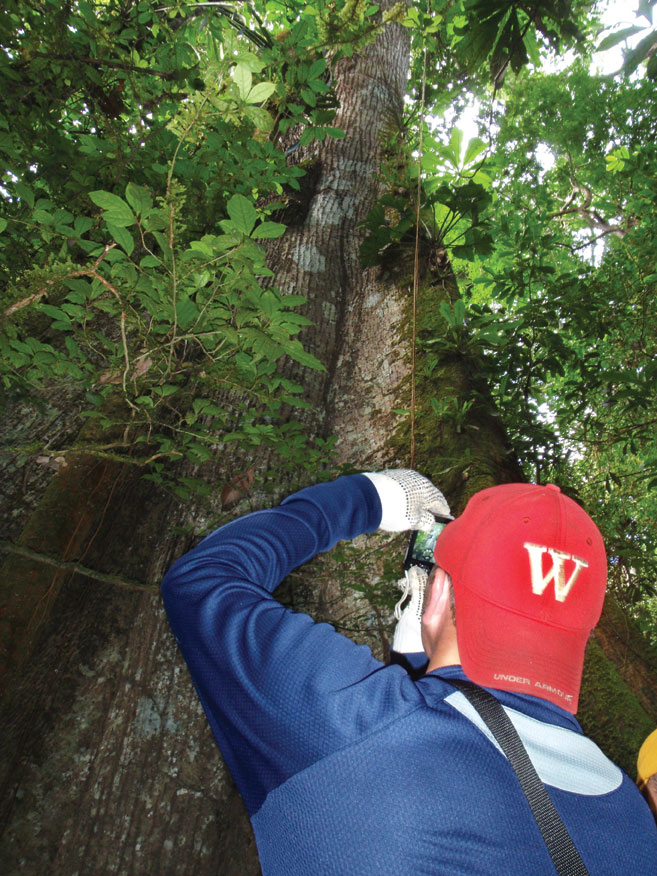Stars on the Forest Floorby David Krohne |
| Printer-friendly version | Email this article |
|
There is an intensity and extravagance to life that must be experienced firsthand: you hike a mile through the forest without seeing the same species of tree twice, flocks of parrots flash through the canopy, giant iridescent blue butterflies flutter in every forest opening, and you fall asleep to the bellow of howler monkeys in the darkness.
So who would have imagined that the most compelling mental image of the rainforest would be a fungus?
Yesterday on the 12-hour trip from Tiputini Biodiversity Station to Quito (boat-bus-boat-truck-plane), I had plenty of time to reflect on our time in the rainforest—gaudy birds, iridescent butterflies, spiders the size of an open hand, monkeys peering down at us from the canopy—these would seem to be the iconic images.
But the one that kept coming back to me was of fungi. I was set up for this on a night float on the river while we spotlighted for wildlife. The southern stars were beyond counting in the forest gap over the river. The Southern Cross shifted from behind the boat to in front as we snaked around 180-degree hairpin bends in the river.
Later in the week we took a night walk along one of the trails radiating out from the station. A few hundred meters into the forest we shut off our headlamps. As our eyes adjusted to the darkness, we began to see pinpoints of light on the forest floor. First ten, then a hundred, then thousands of bioluminescent fungi—"stars" on the forest floor. Some were bright, some faint. We could even imagine little constellations.
I’ve told the students that the only word they are not allowed to use in their blogs is "awesome."
|

 We spent half the spring semester in class studying the evolution and ecology of this system, but I can say from experience that nothing can prepare you for the overwhelming diversity and abundance of the rainforest.
We spent half the spring semester in class studying the evolution and ecology of this system, but I can say from experience that nothing can prepare you for the overwhelming diversity and abundance of the rainforest.